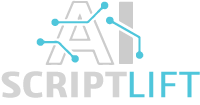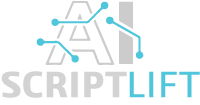
AI-Powered Techniques for Reducing Bounce Rates
Reducing bounce rates is a challenge every website owner faces. But what if artificial intelligence could help keep visitors engaged? At **[Script Lift, LLC](https://www.scriptlift.ai)**, we leverage AI-powered techniques to generate personalized and interactive experiences, ensuring users stay longer and interact more.
AI can analyze user behavior, optimize content, and personalize experiences to reduce bounce rates. Machine learning models track visitor patterns, offering real-time adjustments to improve engagement. From AI-driven content recommendations to smart chatbots, these techniques help businesses retain visitors and enhance their digital presence.
But AI’s role in reducing bounce rates doesn’t stop there. Experts like Neil Patel emphasize the power of AI in improving user experience and engagement. So, let’s explore the most effective AI-powered strategies that can transform your website’s performance!
Understanding Bounce Rate
Bounce rate measures the percentage of visitors who leave a website after viewing only one page. A high bounce rate signals poor user engagement, affecting overall website performance. It often indicates irrelevant content, slow loading times, or a lack of clear navigation. Reducing bounce rates is crucial for improving user experience and increasing conversions.
Search engines consider bounce rate when ranking websites. A high rate suggests that users don’t find the content valuable, which can lower rankings. This negatively impacts organic traffic, reducing potential leads and sales. Additionally, low engagement metrics can harm brand credibility and trust. Businesses must optimize their content strategy to retain visitors and encourage deeper interactions.
Industries like e-commerce, SaaS, and digital publishing rely heavily on bounce rate analysis. For online stores, a high bounce rate means lost sales opportunities. SaaS platforms need to keep users engaged to drive subscriptions. Similarly, media websites depend on multiple page views for ad revenue. Leveraging AI-driven strategies can enhance engagement and reduce bounce rates. Learn more about AI in digital marketing or explore AI-powered content creation for better retention strategies.
The Role of AI in Analyzing Bounce Rates
AI-powered tools analyze user behavior to detect bounce rate patterns. These tools track metrics like session duration, page interactions, and exit points. By processing this data, AI identifies trends that contribute to high bounce rates. It pinpoints weak content, slow-loading pages, or poor navigation that drive users away.
Machine learning algorithms enhance this analysis by predicting bounce trends based on historical data. They assess past user interactions to forecast future behavior. This allows businesses to implement proactive strategies that reduce bounce rates. AI continuously refines its predictions, ensuring accuracy over time.
AI-driven heatmaps and session recordings provide deeper insights. Heatmaps highlight areas where users engage most, revealing content effectiveness. Session recordings capture real-time user interactions, exposing friction points. These insights help optimize page layouts, improve content placement, and enhance user experience.
Leveraging AI in digital strategies is essential for success. Businesses can explore more about AI in digital marketing or understand AI’s role in content strategy for better engagement. Implementing AI-driven solutions ensures lower bounce rates and improved user retention.
Personalized User Experience with AI
AI tailors content dynamically by analyzing user behavior and preferences. It tracks interactions, browsing history, and engagement patterns to deliver relevant material in real time. This ensures visitors see content that resonates with their interests, increasing retention and reducing bounce rates.
AI-driven recommendation engines enhance engagement by suggesting personalized articles, videos, or products. These systems analyze past interactions to predict what users might find valuable next. By keeping visitors immersed in relevant content, AI helps maintain their interest and encourages deeper exploration. For instance, platforms leveraging AI recommendations see higher session durations and improved conversion rates.
AI-powered chatbots further refine user experience by providing instant assistance. These bots answer queries, guide navigation, and recommend content based on user intent. By offering real-time support, they prevent frustration and keep visitors engaged. Businesses integrating AI chatbots experience lower bounce rates and higher user satisfaction.
For more insights on AI’s impact, explore AI in digital content strategy or discover AI’s role in digital marketing.
AI-Optimized Content Strategy
AI analyzes user intent by examining search patterns, behavior, and engagement metrics. It identifies content gaps and suggests improvements to enhance relevance. By leveraging machine learning, AI refines headlines, structures, and readability to align with audience expectations. This optimization ensures visitors find value, reducing bounce rates significantly.
Personalized content boosts engagement by delivering tailored experiences. AI segments audiences based on preferences, browsing history, and interactions. It then curates dynamic content that resonates with each user. This approach increases time spent on pages and encourages deeper exploration. Businesses utilizing AI-driven personalization see higher retention and conversion rates.
For example, an e-commerce brand implemented AI-powered content recommendations and saw a 30% drop in bounce rates. Another company used AI-driven SEO strategies to refine its blog structure, leading to a 40% increase in engagement. These successes highlight the transformative impact of AI in content marketing.
To stay ahead, businesses must embrace AI-driven strategies. Learn more about AI in digital content strategy and how it enhances engagement. Also, explore AI’s role in digital marketing for further insights.
AI-Powered Website Design Enhancements
AI enhances website design by optimizing layout and navigation for seamless user experiences. It analyzes visitor behavior, identifying patterns that improve content placement and menu structures. Smart algorithms adjust layouts dynamically, ensuring users find information quickly. Predictive analytics personalize navigation, reducing friction and boosting engagement.
AI-driven A/B testing refines design elements by analyzing real-time user interactions. It tests multiple variations, identifying the most effective visuals, colors, and CTAs. This data-driven approach eliminates guesswork, leading to higher conversions and lower bounce rates. Automated testing continuously adapts, ensuring optimal performance across devices.
Real-world examples highlight AI’s impact on UX. E-commerce platforms use AI to personalize product recommendations, keeping visitors engaged. News websites leverage AI to adjust content layouts based on reader preferences. Businesses integrating AI-driven design strategies experience significant improvements in retention. For more insights, explore AI in digital marketing and its role in enhancing user engagement. Additionally, discover how AI is shaping SEO for better website performance.
AI-Driven Chatbots and Virtual Assistants
AI chatbots enhance user engagement by providing instant responses to queries. They keep visitors on the site longer by offering real-time assistance. With natural language processing, they understand user intent and deliver relevant information. This reduces frustration and encourages deeper interaction.
AI-powered virtual assistants guide users through the website seamlessly. They suggest relevant pages, recommend products, and assist with navigation. By analyzing user behavior, they personalize the experience, making it more intuitive. This proactive approach keeps visitors engaged and lowers bounce rates.
Many businesses leverage AI chatbots to improve retention. E-commerce platforms use them for product recommendations and order tracking. Service-based companies integrate them for instant customer support. For instance, AI-driven assistants help users find relevant content, improving engagement. Businesses adopting AI see significant improvements in user interaction.
To stay competitive, companies must embrace AI solutions. Learn more about AI in digital marketing and its impact on engagement. Discover how AI is shaping SEO strategies for better user retention.
AI-Based Predictive Analytics for Bounce Rate Reduction
Predictive analytics leverages AI to anticipate bounce rates and implement proactive strategies. By analyzing user behavior, AI identifies patterns that indicate potential exits. It then suggests real-time adjustments, such as personalized content or optimized navigation, to keep visitors engaged. This data-driven approach ensures a seamless user experience, reducing abandonment rates effectively.
AI-driven customer segmentation further enhances engagement by tailoring experiences to specific user groups. By categorizing visitors based on demographics, behavior, and preferences, AI delivers relevant content that resonates with each segment. This targeted approach increases retention and encourages deeper interactions, ultimately lowering bounce rates.
Several predictive analytics tools help businesses optimize user engagement. Platforms like Google Analytics 4, Adobe Sensei, and Pendo use AI to forecast user behavior and recommend improvements. These tools provide actionable insights, enabling businesses to refine their strategies and enhance website performance.
For more insights on AI’s role in digital marketing, explore the power of AI in digital marketing. Additionally, learn how AI transforms content strategies in this guide on AI-driven content strategy.
AI-Powered Load Time Optimization
AI analyzes website performance by identifying bottlenecks that slow down load times. It evaluates server response, image compression, and script execution to enhance speed. By automating these optimizations, AI ensures a seamless user experience, reducing frustration and bounce rates.
AI-driven caching predicts user behavior and preloads content accordingly. This minimizes delays by serving stored data instead of fetching it repeatedly. Additionally, AI enhances content delivery networks (CDNs) by dynamically selecting the fastest server based on user location. This reduces latency and ensures pages load instantly.
Several businesses have leveraged AI to improve load times and engagement. For example, an e-commerce platform integrated AI-based caching and saw a 40% reduction in bounce rates. Another company used AI-powered CDN optimization, cutting load times by half. These improvements led to higher conversions and better user retention.
For more insights on AI’s impact, explore AI in digital content strategy. Additionally, learn how AI enhances digital marketing for better performance. Businesses adopting AI-driven solutions gain a competitive edge in user experience and engagement.
AI-Enhanced SEO Strategies to Reduce Bounce Rate
AI refines meta descriptions, headings, and keywords to enhance engagement. It analyzes user behavior to craft compelling meta descriptions that boost click-through rates. Optimized headings improve readability, keeping visitors engaged. AI also selects high-impact keywords, ensuring content aligns with search queries. These refinements create a seamless user experience, reducing bounce rates.
AI-driven search intent analysis helps match content with user expectations. By evaluating search patterns, AI determines whether users seek information, products, or solutions. This insight allows businesses to tailor content precisely, increasing relevance. When visitors find what they need instantly, they stay longer, improving dwell time and engagement.
Real-world examples highlight AI’s impact on SEO. Businesses leveraging AI-powered tools have seen significant improvements in user retention. For instance, AI-driven content optimization has helped brands refine their messaging, leading to lower bounce rates. Companies integrating AI into their SEO strategies experience better rankings and sustained traffic growth. To explore more about AI’s role in SEO, check out AI’s future in SEO and AI benefits for SEO.
Measuring and Continuously Improving Bounce Rate with AI
AI-powered analytics tools track bounce rate trends by analyzing user interactions in real time. These tools identify patterns, detect anomalies, and provide actionable insights. By continuously monitoring engagement metrics, AI helps businesses refine their strategies for better retention. Automated reporting simplifies data interpretation, offering instant feedback on content performance.
AI-driven insights enable businesses to make data-backed decisions for ongoing optimization. Predictive analytics forecast user behavior, allowing proactive adjustments. Machine learning algorithms assess content effectiveness, ensuring pages align with user intent. Automated A/B testing refines layouts, CTAs, and navigation to enhance engagement.
To maintain low bounce rates, businesses should regularly update AI models with fresh data. Integrating AI with personalization strategies improves relevance, keeping visitors engaged. Leveraging AI for content optimization ensures pages remain compelling and user-friendly. For more insights, explore AI in digital marketing and AI-driven content strategies. Continuous refinement and AI-powered automation are key to sustaining long-term engagement.

